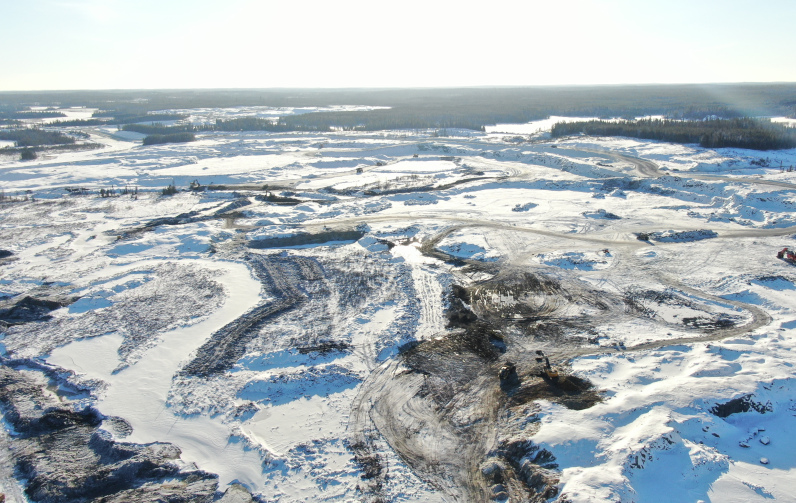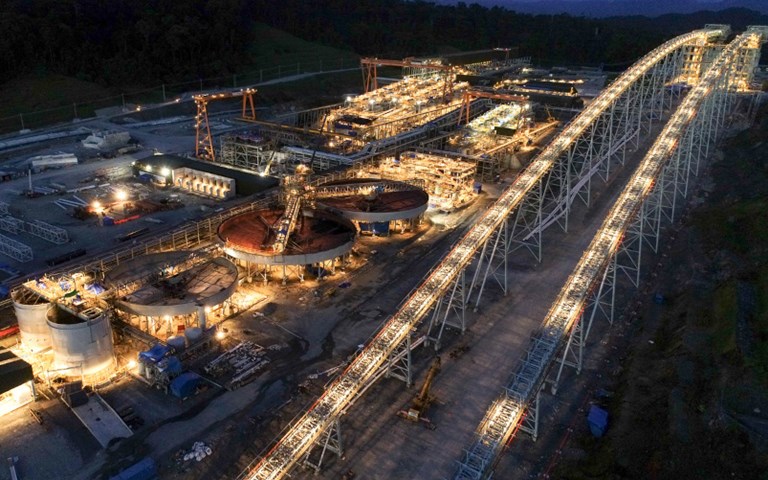Copper prices could start to wane as new operations, such as First Quantum's Cobre Panama, come online. Courtesy of First Quantum Minerals.
Global decarbonization efforts, electrification trends and the demand for electric vehicle (EV) batteries are driving key metal prices higher, Patricia Mohr, a retired Scotiabank economist who developed the Scotiabank Commodity Price Index, said in a late-November webinar hosted by the Management and Economics Society of CIM.
Beginning in mid-last year, the Scotiabank Commodity Price Index began “a very rapid and quite substantial recovery” from the carnage of the first lockdowns in March 2020, Mohr said. By October 2021, it had returned to May 2011 highs. The global purchasing managers’ index, which drives sentiment for the commodities market, also experienced a substantial pickup after a loss of momentum during the lockdown that rivalled the 2008-09 recession.
But while China, a country essential to the health of commodity markets, has posted blockbuster upticks in industry activity, including a 35 per cent year-over-year (YOY) increase in January and February this year, it slowed markedly in recent months, to just a 3.3 per cent YOY increase in September and October. Mohr said that figure is notable, particularly against the current price of copper.
“Had we seen a mere three per cent year-over-year change in China’s industrial activity a couple of years ago, we would have had an immediate meltdown in copper prices,” she said. “You would be looking at copper at no more than $2 per pound. Instead, it’s trading at $4.46 per pound on the [London Metal Exchange] today, so there is quite a change in sentiment.”
Copper sentiment now relies more on the positive impact of decarbonization and future demand than China’s economic outlook, Mohr said.
She forecasted the metal, which hit a new high of $4.88 per pound in May 2021, would hover around $4.25 next year. The price could start to wane into 2023 as roughly 2.4 million tonnes of new mine supply comes online, from mines including Ivanhoe Mines’ Kamoa-Kakula, Teck Resources’ Quebrada Blanca, First Quantum’s Cobre Panama and BHP’s Escondida.
But Mohr said she is firmly in mining financier Robert Friedland’s camp, expecting to see copper prices reach $5 per pound and over in the latter half of the decade, as a “precipitous drop” in mine capacity around 2025 coincides with supercharged demand for the metal from EVs and renewable power.
“In the past year, many governments around the world have adopted decarbonization goals and want to reach net zero by 2050,” she said. “In order to approach that kind of objective, they’re going to have to have very high levels of electric vehicle sales.”
Related: The demand for carbon-free energy is powering an increase in uranium mining projects
According to Mohr, a plug-in hybrid electric vehicle requires just under 60 kilograms and a fully electric vehicle requires 75 to 80 kilograms – a three- and fourfold increase, respectively, over a traditional car’s 20 kilograms of copper.
Global EV sales reached 3.1 million units in 2020. This year China’s new EV sales for the year to date were up 189 per cent over the year prior, boosted by government support for such vehicles. Mohr said, based on her review of auto manufacturers’ EV plans, she expects to see 12 million annual unit sales in 2025 and 28 million by 2030, which would represent 30.5 per cent of overall motor vehicle sales.
These figures would surpass the International Energy Agency’s baseline scenario of governments’ and industries’ stated climate-change mitigation policies, Mohr said, and be more in line with the agency’s sustainable development scenario, which would achieve Paris Accord commitments and a net-zero economy.
The promise of EVs is also boosting other critical metals, including nickel, lithium and three rare earth elements – neodymium, praseodymium and dysprosium – that are critical to magnet production. Neodymium has seen a substantial price increase, which Mohr said was due to increased uptake of electric vehicles in China and the Eurozone. Lithium carbonate and lithium hydroxide prices have both reached record highs.
“One wonders if there isn’t a lot of hype for some of these forecasts for demand growth for copper and other metals because of EVs, but I think it isn’t hype. It’s actually mostly going to be reality,” she said.
Mohr also highlighted increasing renewable power around the world as a boon for copper. While coal’s global share of the energy market is declining slowly – reaching 36 per cent in 2020, down from 40 per cent in 2010 – renewables’ share has increased more rapidly, up to 11.7 per cent in 2020 from four per cent in 2010, according to BP’s Energy Outlook. And while India, China and the United States chose not to sign onto a COP26 pledge to end coal as an energy source, Mohr said she sees “tremendous” growth in renewable power investment in India as reason for optimism.
“There’s going to be a big growth in demand for copper in renewable energy, and also for the rare earths,” she said.




